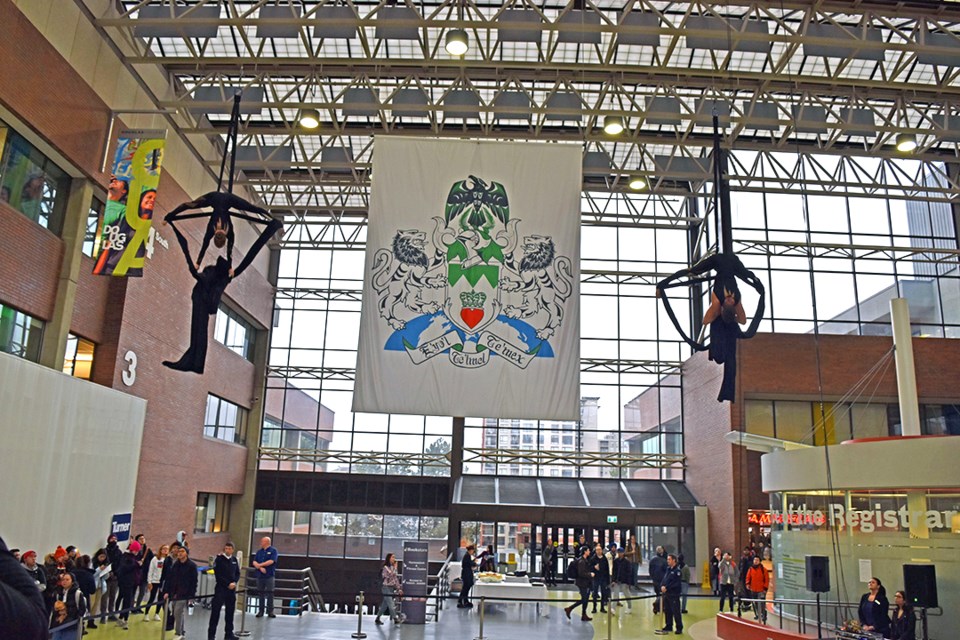Douglas College has unveiled its first-ever coat of arms to celebrate the school’s 50th year of operations.
The college held a ceremony Tuesday morning at the New Westminster campus to unveil the coat of arms, which officials are touting as the first in Canada to feature “complete artwork rendered by an Indigenous artist.”
Carrielynn Victor, a Coast Salish artist, based her artwork on designs from the Canadian Heraldic Authority, the body responsible for creating new coats of arms, flags and other symbols in Canada.
The coat of arms includes a shield with a crowned heart, a symbol taken from the Douglas family’s coat of arms, which is supported by a pair of lions, which the college said was a “nod” to its mascot.
Atop the shield sits a raven and a pair of Douglas fir boughs, and below the shield and lions is a globe to represent Douglas College’s global outlook.
A banner at the bottom reads “E’yo’l, Te’lmel, Te’mex,” meaning “Excellence, Knowledge, Passion” in hən̓q̓əmin̓əm̓ (Halkomelem), a Coast Salish language.
“This coat of arms project has been an exploration of blending two traditions with strong principles, and prescribed design elements,” said Victor in a news release.
“The resulting coat of arms should stand the test of time, as it carries elements that are true to heraldry, and also to Coast Salish design. I was honored to blend my Coast Salish and Scottish heritage together in this one-of-a-kind piece.”
Kathy Denton, Douglas College president, said coats of arms represent a “shared sense of history and tradition.
“But whose history and whose tradition?” Denton said. “Inviting Carrielynn (Victor) to interpret our coat of arms in her own vision is one way Douglas is engaging in the spirit of reconciliation and building a more welcoming campus.”
Bruce Patterson, acting chief herald of Canada, said the Canadian Heraldic Authority was “thrilled” to work with an Indigenous artist for Douglas College’s coat of arms.
“This is a new way of working for us, and we are grateful to Douglas College for facilitating this project, which could set important precedents for how Canadian heraldry can showcase Indigenous art and symbolism,” Patterson said.



